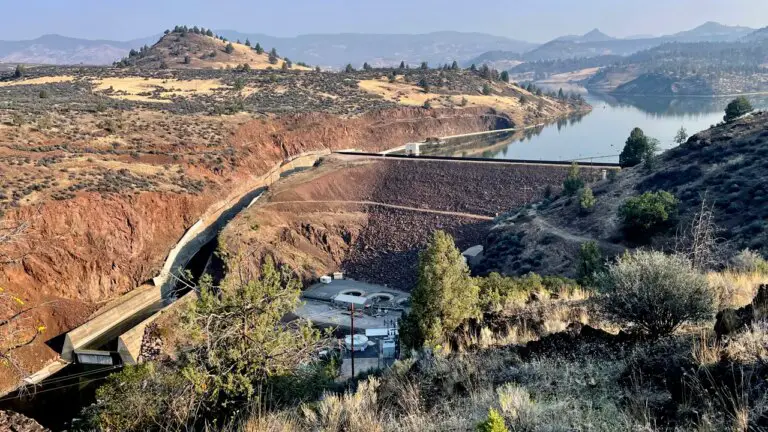Historic Dam Removal Project Begins in California-Oregon Border
In an ambitious endeavor, the largest dam removal project in United States history is now underway along the California-Oregon border. This monumental initiative focuses on removing four dams along the Klamath River, with the smallest already in the process of deconstruction and the remaining three scheduled for removal next year.
Dams were initially constructed many decades ago with the primary purpose of generating electricity. However, in doing so, they inadvertently disrupted the river’s natural flow and severely impacted the salmon population. These fish hold deep cultural and spiritual significance for numerous Native American tribes residing in the region.
The call for dam removal gained momentum in 2002 when a bacterial outbreak, exacerbated by low water levels and warm temperatures, led to the unfortunate demise of over 34,000 fish. This catastrophic event galvanized Native American tribes to advocate for the dams’ removal. Following extensive negotiations, federal regulators granted approval for the dam removal plan last year. PacifiCorp subsequently transferred ownership of the dams to a nonprofit organization tasked with overseeing the project.
As for the timeline, work on the smallest dam, known as Copco 2, has already commenced. However, removing the larger dams will be a more time-consuming process, with work scheduled to commence in January and completion expected by the end of 2024.
The removal process won’t involve dramatic explosions but rather a gradual draining of the reservoirs behind the dams this spring. Subsequently, crews will employ heavy machinery and limited explosives to dismantle the dams. This extensive effort encompasses more than demolition; it also includes endeavors to restore the environment to its pre-dam conditions. Over the years, Native American tribes have collected native plant seeds by hand, which were then cultivated in nurseries to produce additional seeds for replanting along the riverbanks.
The project comes with a budget of $450 million, supplemented by a $50 million contingency fund. The financial burden is shared between taxpayers and the ratepayers of utility company PacifiCorp.

